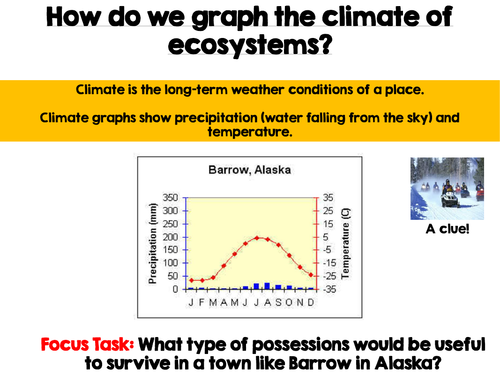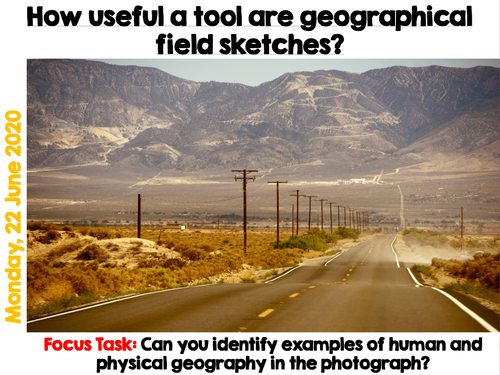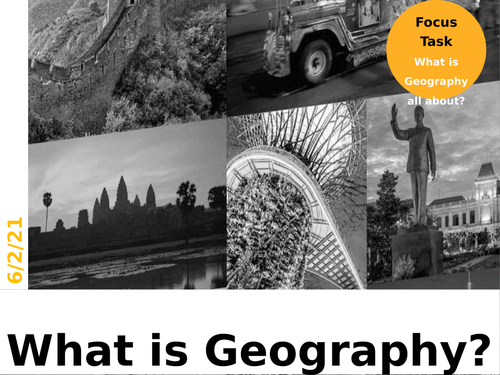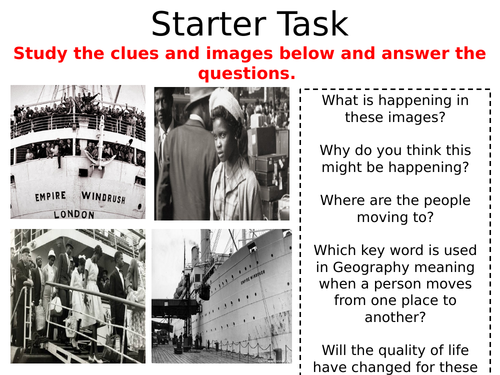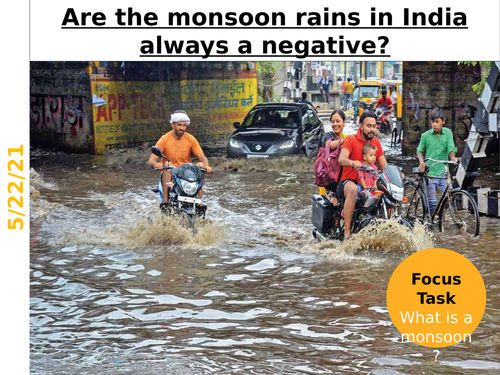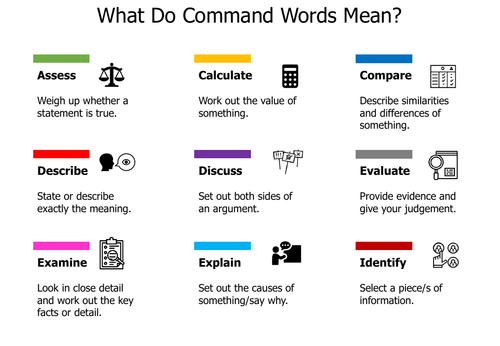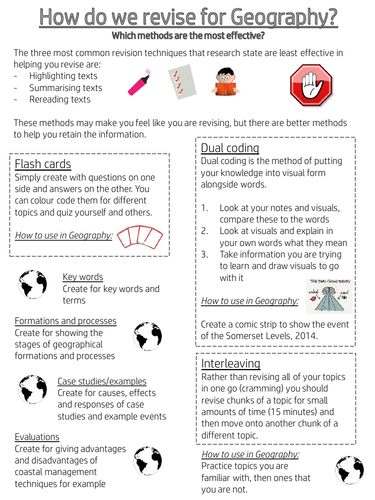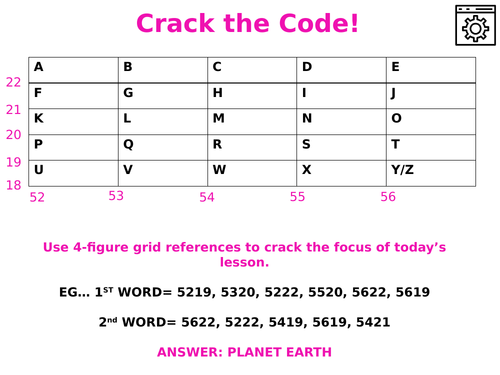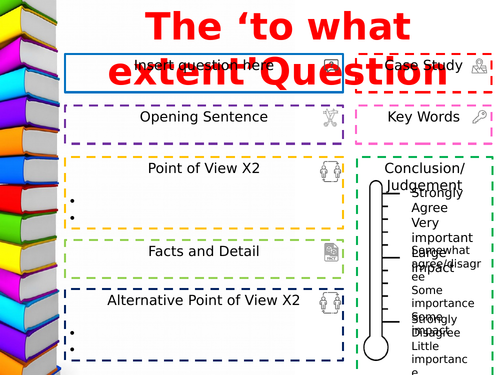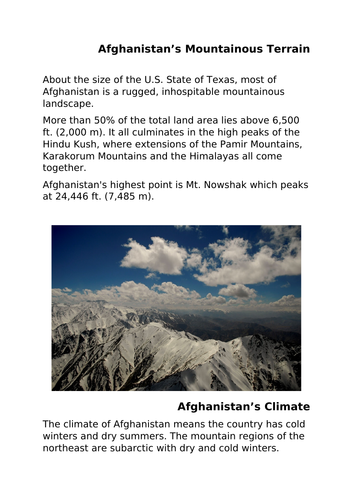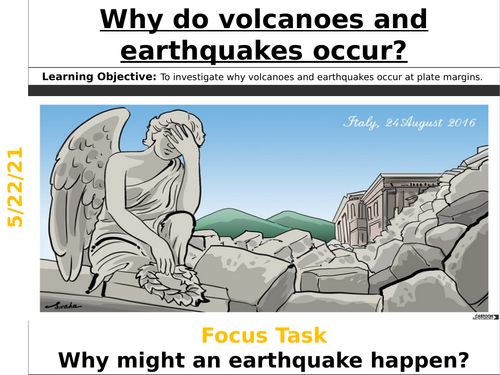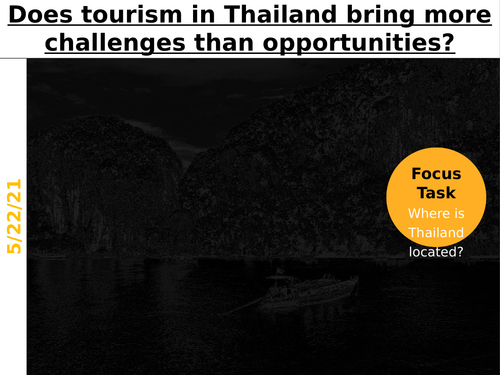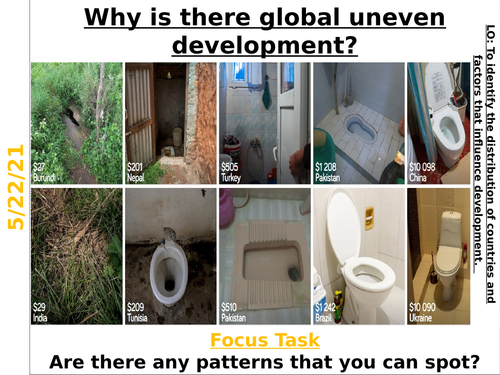38Uploads
14k+Views
29k+Downloads
Geography

Year 6 Transition Work 2023- Geography
I have created a Geography transition work book for Year 6 students to complete to aid the transition to secondary school. This will support students with the key skills needed to progress.

Climate Graphs
Free and fully editable lesson based around skills required for climate graph interpretation.
The lesson includes:
How is a climate graph made and interpreted?
Guess Who! (climate graph edition…)
Constructing own climate graph using data
+/- of climate graphs

Field Sketches
Free and fully editable lesson showing students what field sketches are, the top tips for drawing field sketches, practice examples and +/- of field sketches.

What is Geography?
A fully editable lesson introducing students into what is Geography?
The lesson includes:
Circle map task
Defintions
Categorising types of Geography
Plenary- categorising elements of Geography through images

National Windrush Day 2021
A fully editable lesson created for National Windrush Day 2021 (Tuesday 22nd June) to highlight the importance of migration patterns to the UK in the past and to inform students of the event.
The lesson includes:
Photo interpretation tasks
Key word match ups
Map work based upon the journey
Geographical skills questions
Development indicators based upon Jamaica
Push and pull factors
Disclaimer- Please don’t adapt and then re-share without my permission.
Bundle Sale

KS3 Schemes of Work/Learning Bundle
A bundle of some of my schemes of work to save you some cash! Included is:
KS3 Asia SOW
KS3 Afroca SOW
KS3 River Landscapes SOW
KS3 Using our Natural Environment SOW
KS3 Population SOW
Sale

Are the monsoon rains in India always a negative?
This is a fully resourced lesson based upon the monsoon rains in India. The lesson includes the following:
• What are monsoon rains?
• Classifying the effects of monsoon rains into positive and negative as well as social, economic and environmental.
• Pupils need to consider whether they only create challenges and answer the key question.
Sale

Should tropical rainforests be protected?
This fully resourced lesson focuses upon whether tropical rainforests should be protected whilst also exploring additional information about tropical rainforests. The lesson includes:
• Distribution/location of tropical rainforests
• Use sources to discover why rainforests are of value/important to both people and the planet and how human activity is threatening them
• Consider the methods used to manage the threats /conserve the rainforests.

Student Friendly Command Words
Student friendly commands words for OCR A GCSE Geography.
I have this in my exercise books and as a display as a constant reminder.

How do we revise for Geography?
A useful resource to support students in finding suitable ways for them to prepare and revise in Geography.

Starter Toolkit
This is a starter toolkit designed and made to engage students from the start of the lesson. This fully editable download includes:
Crack the code
Hangman
What if?
The 5 W’s
What can you sense?
Word scramble
Word association
Odd one out
Think, pair, share
Three golden rules
Brain fill
Spot the difference
Circle time
What’s the link?
Geog your memory
What do you know?
What’s your opinion?
Bingo
Which is the worst?
Disclaimer- ‘KG Second Chances Sketch’ is the font used.

Structure Sheets
A range of different structure sheets designed and made to support students in answering higher tariff exam questions at GCSE, and a challenge in KS3.
These sheets are fully editable. This download includes:
To what extent
Assess
Evaluate
How far do you agree?
The four mark explain
Describe
Discuss
Disclaimer note- ‘The Skinny’ and ‘Sweet Purple’ are the fonts used.
Sale

Where is Asia?
Where is Asia and what countries belong to Asia?
A fully resourced lesson based upon locating Asia and the countries which belong to it. The lesson also focuses upon human and physical geography with classifying activities included.
Sale

What factors affect the development of a country?
This fully resourced lesson focuses upon factors that affect the development of a country. The lesson includes:
Case Study of an LIDC: Afghanistan
Investigating a range of factors that have held back the development of Afghanistan and as a result caused it to be an LIDC.
Factors to consider:
Mountainous terrain
Climate
Landlocked
Status of women perceived by the Taliban
Civil War
Sale

Why do volcanoes and earthquakes occur?
This is a fully resourced KS3 aimed lesson focusing upon why volcanoes and earhquakes occur. The lesson includes:
• Introducing pupils to a plate margin distribution map and discuss the fact that tectonic activity occurs at plate margins.
• Showing pupils a map of the distribution of tectonic activity and the distribution of plate margins and ask them to make links.
• Pupils need to be aware of the three plate margins: Destructive, Constructive and Conservative margins and need to know how volcanoes and earthquakes are created here.
• Pupils should be able to draw annotated diagrams and/or create a sequence of steps to explain the formation of hazards at all three margins.
Sale

What are the different types of volcanoes?
This is a fully resourced lesson focusing upon the types of volcanoes around the world. The lesson includes:
• Describing the distribution of global volcanic activity (specifically make links to Pacific Ring of Fire)
• Showing pupils images of a shield and composite volcano and ask them whether all volcanoes are the same.
• Pupils need to be able to identify and explain similarities and differences between the volcanoes. Shape, type of eruption and consistency of lava are the main differences.
Sale

What damage do earthquakes cause?
This is a fully resourced lesson focusing upon the cause and impacts of the Nepal earthquake in 2005.
Sale

Does tourism in Thailand bring more challenges than opportunities?
This is a fully resourced lesson based upon the impacts of tourism in Thailand. The lesson includes the following:
• Graph interpretation – pupils need to be able to describe key trends/anomalies on a graph
• Pupils will use sources to classify benefits and challenges of tourism into social, economic and environmental effects.
• Pupils make a judgement about whether tourism creates more challenges or opportunities. The judgement needs to be supported with evidence.
Sale

Why is there global uneven development?
This fully resourced lesson investigates reasons why there is uneven development around the world. The lesson includes:
• Describing the distribution/location of the three categories of country from a world map
• Considering the social and economic indicators used to measure development such as life expectancy and GNI
• Categorising the factors that can hinder or promote development into physical and human such as climate and colonisation.
Sale

KS3 Africa Scheme of Learning
Complete scheme of learning (12 lessons) aimed at KS3 focusing upon the continent of Africa. All lessons are fully resourced.
This scheme of work includes:
Use of Geographical skills to show how we will link to Africa through holidays.
Investigating the impacts of tourism in one country in Africa (Kenya) using a case study and suggest how the environment can be protected against mass tourism through eco-tourism.
Developing our enquiry skills by looking at where our food comes from.
Investigating the causes and effects of the food crisis in Africa and speculate on the possible long term impacts on the continent
Investigating how the conflict in various countries are causing problems socially and economically.
Investigating why people are moving from rural areas to urban areas in LIDCs and suggest the impact that this might have on the wider community.
Investigate the problems faced by the people living in squatter settlements
Investigating the possible solutions to the key problems in squatter settlements by using a case study to support your answer.


